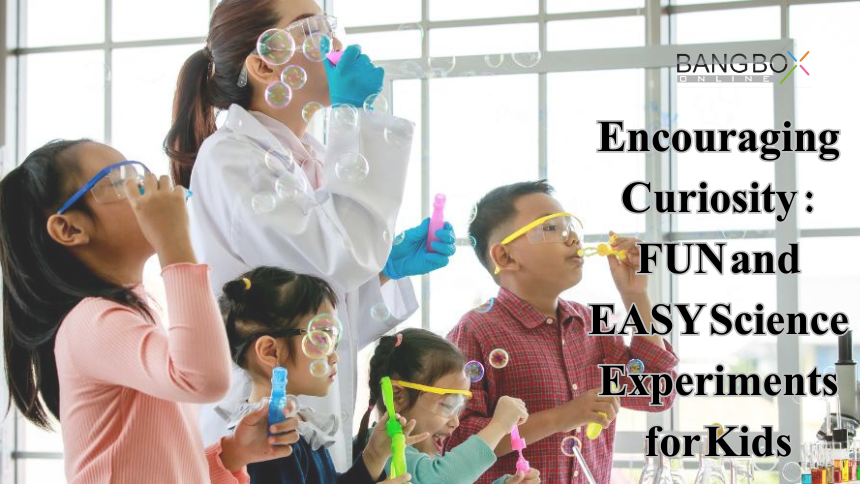
Encouraging Curiosity: FUN and EASY Science Experiments for Kids
Children are natural inquirers; they love to explore, ask questions, and investigate anything and everything in their environment. Experiments in science offer an interactive and fun opportunity for kids to explore the world around them and develop essential critical thinking skills. So, in this article, we’re going to look at some easy, enjoyable science experiments that are ideal for children. These activities are perfect for parents, teachers, and caretakers to enchant children and encourage a lifelong curiosity in science.
Why Kids Should Perform Science Experiments.
Science activities for children come with more bonuses than just finding out the truth! Here are some reasons why they are essential.
- Hands-On Learning:
Children learning through experiments can better understand and make sense of the complicated science concepts they discover.
- Critical Thinking:
Youngsters learn to watch, predict, perform experiments, and come to an understanding — a great skill set for dealing with problems in all aspects of life.
- Creativity and Curiosity:
Science experiments encourage imagination and conspiracy, encouraging a love of learning for a lifetime.
- Parent-Child Bonding:
Sharing experiences means new chances for good parent-child relationship building and communication.
- Real-World Application:
Experiments show practical real-world concepts in this manner that turns science into something interesting and applicable in our lives.
What are some fun science experiments?
Simple Science Experiments for Kids:
1. Rainbow in a Jar
Materials: A transparent glass or bottle of water with a few drops of various colored solutions (honey, syrup, washing-up liquid, cooking oil) and food coloring.
Procedure:
Fill the glass with water.
On top put more on a layer of honey/syrup.
Add several different colors of liquids, one by one. Notice how they create layers of differing viscosity.
In this activity, you learn about density while the kids get to witness a beautiful optical illusion!
2. Balloon Rocket
Materials: A long section of twine or rope, a straw, electrical tape, and a balloon.
Procedure:
Pass the string through the straw (using this method to tie a double-knot as described earlier), then pull both ends of the string upwards to secure it between two fixed points.
Blow up the balloon and secure it to the straw.
Release the balloon and observe it rolling off the line.
In this experiment, children will learn about how propulsion and motion work.
3. Baking Soda and Vinegar Volcano
Materials: A tiny plastic bottle, Arm and Hammer baking soda, white vinegar, Dawn blue liquid dish soap, Red food coloring, Model magic modeling clay.
Procedure:
Mold and shape the modeling clay into a volcano formation around the bottle.
Fill the bottle with baking soda and a teaspoon.
Add dish soap to the mixture, along with some red food coloring into another container, and mix vinegar.
Fill up the bottle with the vinegar mix and watch your “volcano” explode!
Here is an example of the classic baking soda + vinegar acid/base reaction experiment.
4. Static Electricity Butterfly
Materials: A sheet of tissue paper, comb, or balloon.
Procedure:
Make yourself a tiny butterfly using paper.
Run the comb or balloon through your hair- or a piece of wool.
Now bring the comb or balloon close to the paper butterfly, and you’ll see the butterfly “flying”, fluttering over to the charged object.
This experiment is about static electricity and magnets.
5. Sink or Float?
Materials: Big bowl or large tub of water with assorted little things (coins, rubber balls, paper clips, and small toys) or any other similar items that might help him have a good time while you work on those household tasks.
Procedure:
Fill the bowl with water.
Have your baby guess if each is going to sink or swim.
Pour each object into the water to watch what happens.
In this experiment, kids can learn about the concepts of buoyancy and density.
Science activities for preschoolers about zoo animals
If you're looking for science activities with a zoo-animal theme, here are a few delightful ideas:
1. Animal Footprints
Materials: Online templates of animal footprints (or traceable animal toys in different colors of playdough and paper).
Procedure:
Spread a slab of playdough onto a flat surface.
Roll out and press an animal track template into the dough to make an impression.
Remove the template gently and look at your “animal track”!
This activity is an effective way to introduce preschoolers to the idea of animal tracks and provides opportunities for discussing how different animals move.
2. Animal Habitats
Materials: Pictures or toy figures depicting the wildlife from your local zoo or giant pieces of paper and markers/crayons.
Procedure:
Choose a few zoo animals.
Get your kid to illustrate, or have them lay the animals on the paper and build their homes.
Talk about the kinds of habitats each creature will grow in.
Children learn about animal homes/habitats and about giving zoo animals the right place to live through this workshop.
3. Animal Sounds
Materials: Device to play the sound of zoo animals (Recordings of zoo animal sounds found everywhere on the Internet).
Procedure:
Listen to recordings of different zoo animal noises.
Ask your little one to name the animals from the noises he/she can hear.
Talk about animal sounds and communication.
Playing this game helps kids get better at recognizing different animal sounds and teaches them about how animals communicate with each other.
8 Safe Science Experiment Tips for Kids
Science experiments are great, Just make sure you’re safe!
Here are some essential safety tips:
1. Always make sure to supervise children when conducting experiments especially when dangerous materials are involved.
2. It's important to use supplies and chemicals that are safe for kids and suitable for their age.
3. Remember to wear safety goggles, gloves, and aprons whenever necessary to prevent accidents.
4. Before starting any experiment carefully.
5. Understand the instructions to expect any risks.
6. Conduct your experiments in circulated areas to avoid the collection of fumes or odors.
7. Properly dispose of materials after use.
8. Promptly clean up any spills that may occur.
Conclusion
Science experiments offer an opportunity to engage minds, stimulate curiosity, and provide valuable learning experiences for children. These activities not only teach principles but also promote problem-solving skills, creativity, and critical thinking. Whether you're exploring experiments at home or incorporating zoo animal-themed activities into a preschooler's journey, the world of science is an exciting kingdom waiting to be discovered. So, let's roll up your sleeves, put on your scientist hats, and embark on an adventure of exploration and wonder with your children. Science truly delivers a hands-on experience, for everyone regardless of age.




